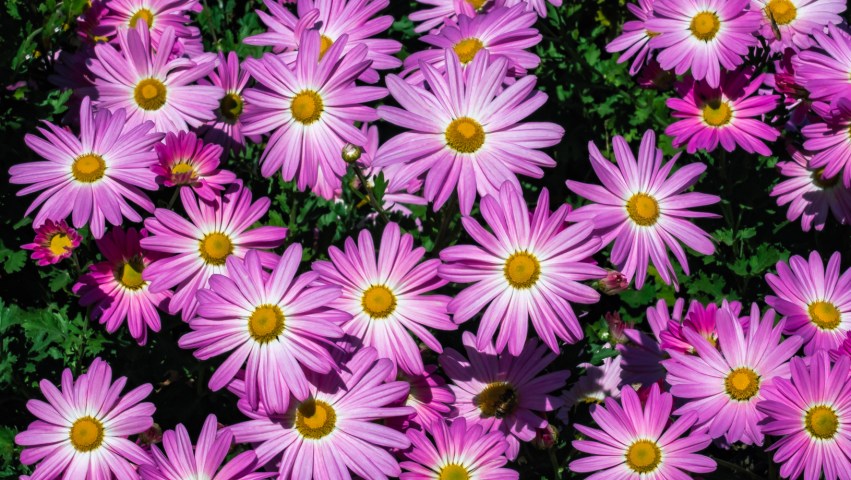From “Chrysanthemum (Asteraceae)” in Garden Flora: The Natural and Cultural History of the Plants In Your Garden by Noel Kingsbury:
“One of the world’s most successful commercial flowers, there seems justice in the plant’s name being derived from the Greek for ‘golden flower.’ Once larger, Chrysanthemum is now a much-reduced genus, with around 30 familiar herbaceous or subshrubby species recognised from eastern Europe across to the Far East. Polyploidy and hybridisation are common, so the origin and classification of this and related genera is still in flux….
“Chrysanthemum species are generally long-lived and often clump-forming. Some have persistent semi-woody growth, but others tend to die out in patches. Generally they are from woodland edge habitats, although several are common along seashores in Japan. Species are found in a number of climate zones, with many of those which have contributed to the cultivated gene pool from the Far Eastern humid subtropical zone….
“The Japanese emperor Gotoba (1183–1198) particularly liked the flower and started using a chrysanthemum graphic as his own personal symbol. Other emperors followed suit, and in the late 13th century it became the official royal family symbol. Today, in English-speaking countries, the Japanese ruling institution is sometimes referred to as the Chrysanthemum Throne. In the East, chrysanthemums have tended to be symbolic of long life, which is perhaps another reason for the popularity of chrysanthemum tea; in the West, however, they became a funeral flower during the course of the 19th century and so were frequently, superstitiously excluded from the home, even being seen as a curse in Italy.”
From “The Chrysanthemum” by William Carlos Williams in The Collected Poems of William Carlos Williams, (Vol. II), edited by Christopher MacGowan:
how shall we tell
the bright petals
from the sun in the
sky concentrically
crowding the branch
save that it yields
in its modesty
to that splendor?
Hello!
Toward the end of November through mid-December of 2023, I encountered some fabulous batches of many-colored mums at Oakland Cemetery’s gardens — but then got wrapped up in my Christmas project and am just getting to those photos now. I suppose technically these are “autumn mums” — but you know I like my alliterations, so I went with “Midwinter Mums” as the post title for this series.
For the first photos in this series, I selected those that had an unusual combination of colors. These mums at first glance appear red — as red is the most dominant color — yet among the red blooms there are quite a few, even from the same multi-bloom stem, that exhibited a distinct color variation that included magenta or pink. On some individual blooms, half the petals were red and half were red and magenta, or magenta appeared toward the center then gradually radiated to red. At first I just thought is was a trick of the light (you know how tricky light can be) and started shifting the magenta toward red in Lightroom — but then set them all back to keep the color variations intact. The first two photos below show how large this group of mums was; and you can see in those photos how magenta appears randomly throughout the cluster.
Thanks for taking a look!




























































































